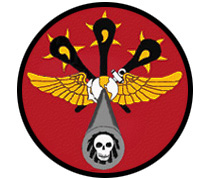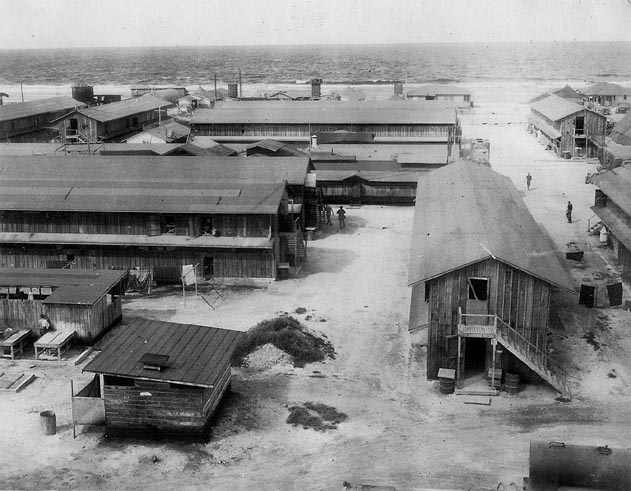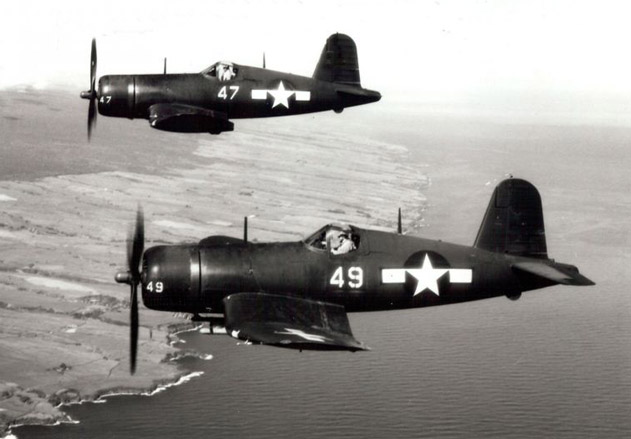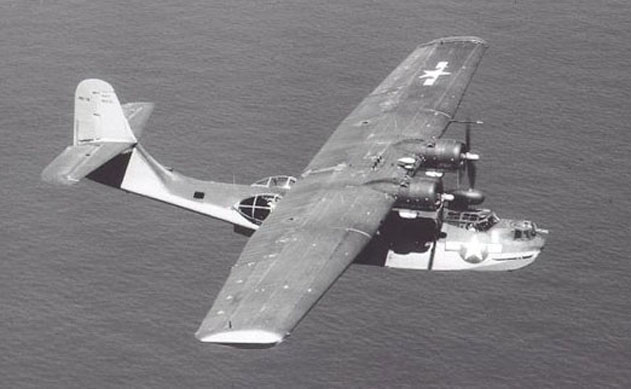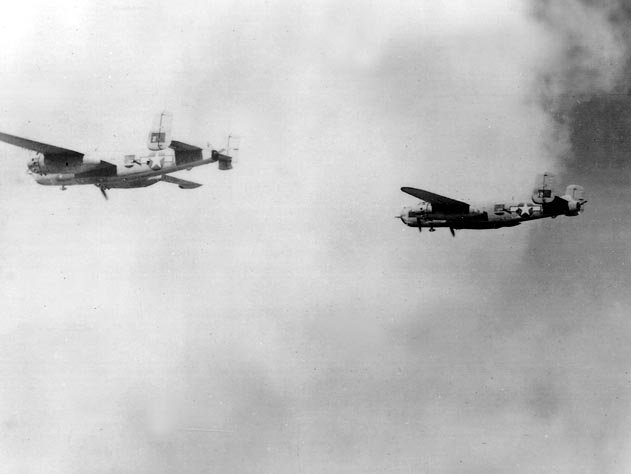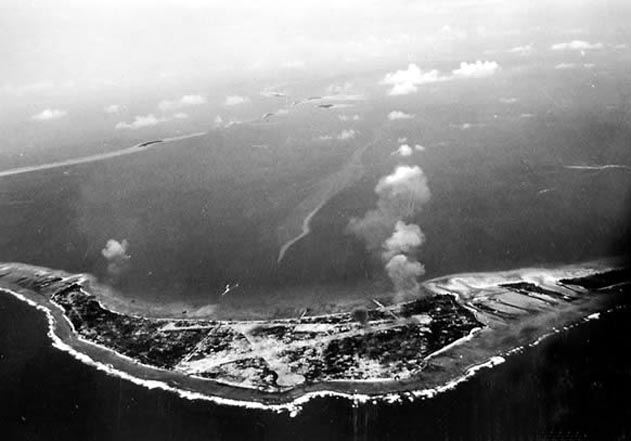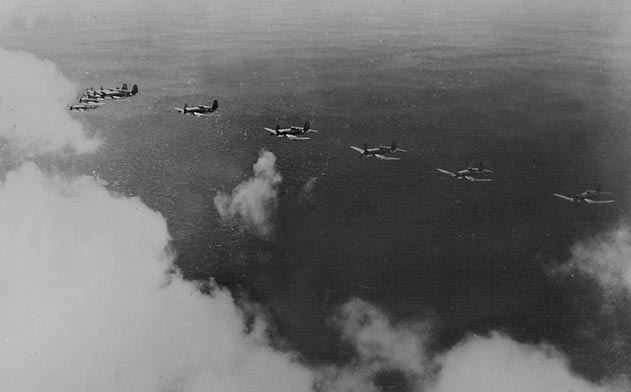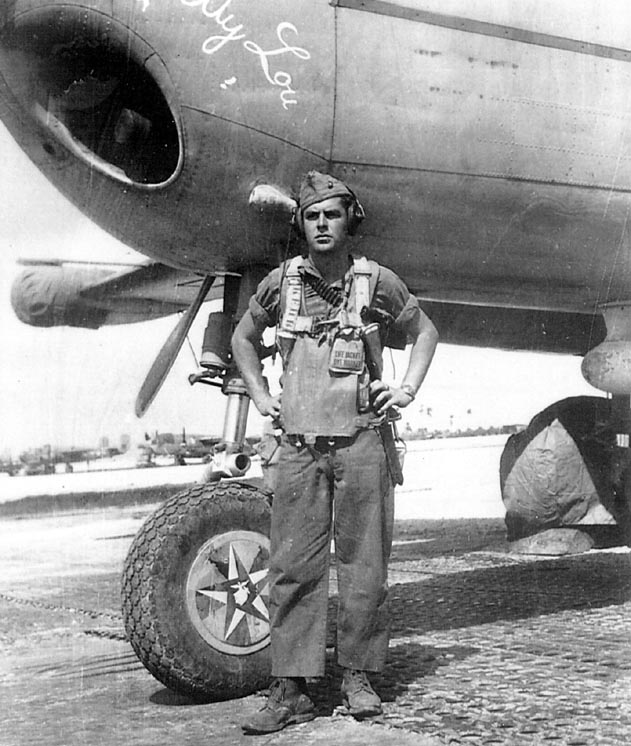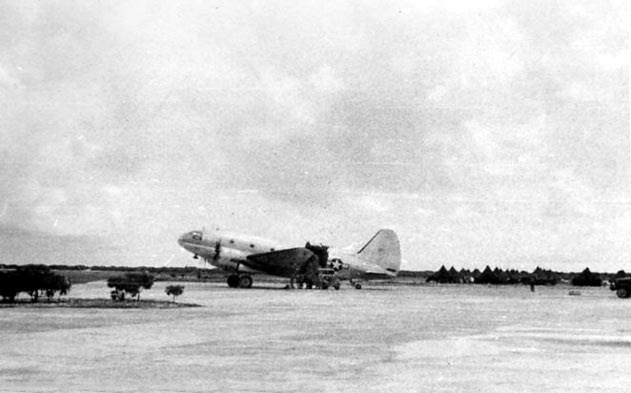|
|
||
|
|
||
|
|
JANUARY 1945 A daily summary of squadron activities for the month is provided below. Additional details for significant events may be found at the linked text. January 1, 1945: One plane flew to Roi and returned. January 2, 1945: Nine planes flew practice gunnery and bombing runs, using 100 pound G.P. bombs. January 3, 1945: Ten planes flew practice gunnery and bombing runs, using 100 pound G.P. bombs. January 4, 1945: Eight planes flew practice gunnery and bombing runs, using 100 pound G.P. bombs. January 5, 1945: No flight operations conducted, however pilots and crews were placed on a submarine alert status. January 6, 1945: Three planes flew a search and reconnaissance mission over Maloelap Atoll, negative results. January 7, 1945: One plane flew to Roi for administrative purposes. January 8, 1945: Two patrols, composed of five planes each, conducted an anti-submarine search, results negative. January 9, 1945: Three planes flew to Roi and returned. January 10, 1945: Five planes provided an escort for a disabled cargo ship from dawn to dusk. January 11, 1945: Five planes provided an escort for a disabled cargo ship from dawn to dusk. January 12, 1945: Four planes flew to Roi and returned. January 13, 1945: Eight planes conducted a search for a lost plane of VMO-155, results negative. Two planes flew a strike against Maloelap Atoll (Aircraft Action Report 1). January 14, 1945: Six planes continued to search for the lost plane of VMO-155, results negative. One plane flew a strike against Kaven Island, Maloelap Atoll (Aircraft Action Report 2). January 15, 1945: Ten planes conducted a search for a lost plane of VMO-155, results negative. January 16, 1945: Three planes conducted a search for a lost plane of VMO-155, results negative. January 17, 1945: One plane escorted VMO-155 on a strike of Jaluit Atoll (Aircraft Action Report 3). January 18, 1945: Nineteen flights were conducted in search of a lost plane from VMF-111 from dawn until dusk, results negative. January 19, 1945: Fourteen flights were conducted in search of a lost plane from VMF-111 from dawn until dusk, results negative. January 20, 1945: No flight operations conducted. January 21, 1945: One plane escorted VMF-331 on a strike of Mille Atoll (Aircraft Action Report 5). January 22, 1945: Nine planes flew a strike against Wotje Island, Wotje Atoll (Aircraft Action Report 4). January 23, 1945: No flight operations conducted. January 24, 1945: No flight operations conducted. January 25, 1945: No flight operations conducted. January 26, 1945: One plane conducted a search for a submarine near Wotje Atoll, negative results. January 27, 1945: One plane flew to Eniwetok and remained overnight. January 28, 1945: One plane returned to Kwajalein from Eniwetok. Two local test hops were flown. January 29, 1945: One plane flew to Eniwetok and remained overnight. January 30, 1945: One plane returned to Kwajalein from Eniwetok. January 31, 1945: Pursuant to orders, thirteen planes and 144 officers and men departed for detached duty on Eniwetok Island, Eniwetok Atoll. The purpose of this assignment was to provide convoy escorts for the invasion fleet assembling for the assault on Iwo Jima, to conduct sector searches and hunter-killer missions, and to provide daily surveillance of the Japanese activities on Ponape Island.
SQUADRON AREA: When Marine Bombing Squadron Six-Thirteen arrived on Kwajalein they were assigned an area that had been vacated by the U.S. Army. Seen above is a number of the wooden buildings in the rear area after the ground echelon arrived and made it suitable for the squadron to occupy. Photograph: U.S. Marine Corps, Arthur H. Navarre Collection (Courtesy of Diane Hindy)
F4U-1D CORSAIR: The Chance-Vought F4U-1D was the standard Marine Corps fighter-bomber aircraft in 1945. Heavily armed with six .50 caliber machine guns, it was capable of speeds in excess of 400 miles-per-hour. Photograph: U.S. Navy Historical Archives
PBY-5 CATALINA: With a range of 2,990 miles and the ability to land on water, Consolidated PBY-5s in the Marshall Islands were operated by Navy Patrol (VP) squadrons. These aircraft often accompanied VMB-613 on strikes, serving as an air-sea rescue or Dumbo aircraft. Photograph: U.S. Navy Historical Archives
EN-ROUTE TO A STRIKE: A formation of two PBJ-1Hs en-route to strike one of the bypassed Japanese-controlled islands. The aircraft on the left is MB-2, Bureau Number 35286, while the one on the right is MB-12, Bureau Number 35271. Photograph: U.S. Marine Corps (Courtesy of William A. Kehr)
WOTJE UNDER ATTACK: A column of smoke rises from the Japanese-held island of Wotje. VMB-613 aircraft attacked Wotje Island for the first time on January 22, 1945—a nine-plane strike. Photograph: U.S. Marine Corps
F4U FIGHTER-BOMBERS: Following the lead of a VMB-613 PBJ-1H, a flight of F4U fighter-bombers are headed to a strike on one of the bypassed Japanese atolls. VMB-613 performed many of these navigational escort mission due to the extensive navigational equipment aboard their aircraft. Photograph: U.S. Marine Corps (Courtesy of William A. Kehr)
AVIATOR'S FLIGHT GEAR: Technical Sergeant William A. Kehr displays the typical clothing and equipment of the squadron's flight crews in the Central Pacific. His equipment includes: earphones; flight coveralls; parachute and parachute harness; Mae West with dye marker; .38 caliber revolver and ammunition; USMC combat knife; survival map, and; boondockers. Although not shown in this photograph, a baseball cap was often worn in lieu of the Marine Corps issued "overseas hat." Note the unique art work on the hub of the nose wheel and the aircraft's name, "Betty Lou." Photograph: U.S. Marine Corps (Courtesy of William A. Kehr)
CURTISS R5C: A twin-engine Marine R5C transport aircraft being unloaded on an unidentified island in the Pacific. Aircraft of Marine Transport Squadrons (VMRs) frequently flew supplies to Kwajalein, Roi, Eniwetok, and Majuro. Photograph: Marine Bombing Squadron Six-Thirteen (Courtesy of Christopher Pelletiere) |
|
|
Copyright © 2008 Marine Bombing Squadron Six-Thirteen Association. All Rights Reserved. |
||
